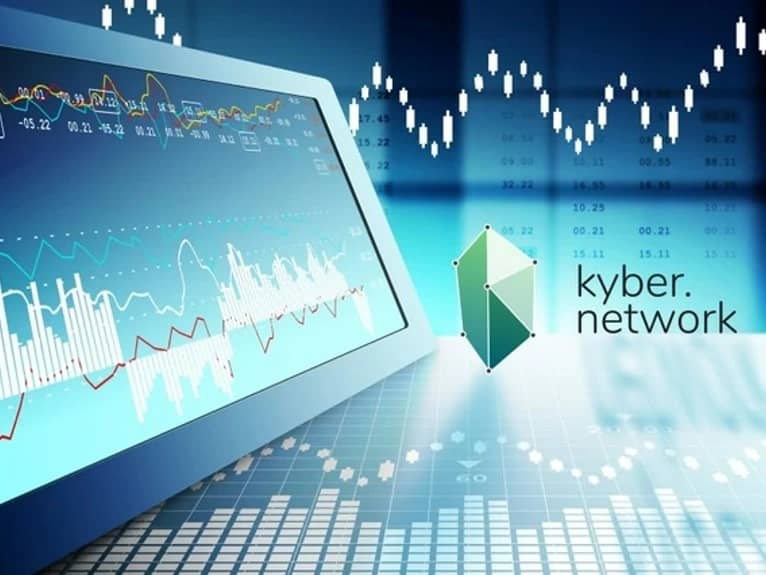위키 구독하기
Share wiki
Bookmark
Kyber Network
Kyber Network
**카이버 네트워크 (KNC)**는 분산형 온체인 유동성 프로토콜이자 암호화폐로, 디지털 자산의 교환 및 전환을 허용합니다. 카이버에 상장된 모든 ERC-20 토큰으로부터 사용자가 결제를 받을 수 있도록 결제 API와 위젯을 제공합니다. 카이버 팀은 또한 카이버 프로토콜의 유동성을 사용하는 탈중앙화 거래소(DEX)인 KyberSwap을 운영합니다.
개요
카이버 네트워크의 주요 아이디어는 보장된 유동성을 갖춘 온체인 및 즉시 거래를 지원하는 것입니다. 어떤 애플리케이션에도 통합될 수 있는 프로토콜입니다. 개발자는 이 프로토콜을 사용하여 즉시 토큰 스왑 서비스, 토큰 결제 및 금융 dapp을 포함한 결제 흐름 및 애플리케이션을 구축할 수 있습니다. [1]
역사
카이버 네트워크는 ERC-20 토큰의 시장 유동성을 집계하고 스왑을 용이하게 하는 데 중점을 둔 이더리움 기반 프로토콜입니다. 팀은 2017년 9월 ICO(Initial Coin Offering)를 통해 자금을 조달했으며 2018년 2월 메인넷을 출시했습니다. [2]
2020년 7월 7일경, 카이버 네트워크는 프로토콜 업그레이드인 Katalyst를 출시했습니다. 이 출시를 통해 KNC 토큰 보유자는 투자 수익을 얻고 네트워크 전체에 대한 경제적 의사 결정에 참여할 수 있게 되었습니다. 프로토콜 업그레이드와 함께 KyberDAO와 스테이킹도 출시되어 유동성 제공자, KNC 및 DEX 토큰 보유자에게 새로운 혜택을 제공했습니다. [3] 이 추가는 카이버의 DeFi 분야 내 영향력을 강화할 것으로 예상되었습니다.
기술
KyberNetwork의 주요 목표는 보장된 유동성을 갖춘 온체인 및 즉시 거래를 지원하는 것입니다. 예비 관리자가 운영하는 예비 자금으로부터 유동성을 집계하여 작동합니다. 이러한 관리자는 제공되는 거래 쌍의 유동성을 유지하고 매수 및 매도 스프레드를 업데이트하는 책임이 있습니다. 관리자는 각 거래의 스프레드를 통해 보상을 받습니다. 또한 추가 자본을 가진 사람이라면 누구든 예비 풀에 기여하고 수익을 얻을 수 있습니다. [4]
현재 세 가지 유형의 예비 관리자가 있습니다. Fed Price Reserve는 오프체인 가격 피드를 활용하여 환율을 계산하고, Automated Price Reserve는 알고리즘을 사용하여 상대적 유동성을 기반으로 가격을 자동으로 결정하며, Orderbook Reserve는 완전한 온체인 주문서를 사용하는 유일한 신뢰할 수 없는 방법입니다.
지갑, 판매자 또는 탈중앙화 애플리케이션과 같은 서비스는 모든 예비 자금의 집계로 구성된 자본 풀에 액세스하기 위해 Kyber를 기반으로 구축할 수 있습니다. 이러한 서비스의 사용자는 주문이 가능한 최상의 가격으로 실행되는 토큰을 스왑할 수 있습니다. 이는 예비 관리자가 가격 경쟁력을 유지하고 더 큰 스프레드를 취할 수 있는 유동성이 낮은 토큰에서 시장을 만들도록 유도합니다.
2020년 7월 Katalyst의 도입으로 KNC 토큰 보유자는 수익을 얻고 카이버 네트워크의 거버넌스에 참여할 수 있게 되었으며, 프로토콜 수수료는 0.2%로 낮아졌고, 유동성 제공자가 KNC를 보유해야 하는 요구 사항(유동성 추가)이 제거되어 새로운 유동성 제공자의 진입 장벽을 제거했습니다. 유동성 제공자에 대한 새로운 혜택 외에도 이제 프로토콜 수수료에서 환급을 받기 때문에 유동성을 계속 제공할 새로운 인센티브를 갖게 되었습니다. [5]
카이버는 현재 45개 이상의 예비 자금을 보유하고 있습니다. 세 가지 주요 유형의 예비 자금이 있습니다. 처음 두 가지 유형인 Automated Price Reserve(APR)와 Fed Price Reserve(FPR)는 카이버의 전용 유동성 제공업체인 반면, Bridge Reserve는 Uniswap, Oasis 및 Bancor과 같은 다른 온체인 제공업체로부터 유동성을 가져옵니다. [6]
카이버 Fed Price Reserve(FPR)
Fed Price Reserve는 전문 시장 조성자 또는 고급 개발자가 효과적으로 온체인에서 시장 조성을 하고 수익을 창출할 수 있도록 설계되었습니다. FPR을 운영하는 시장 조성자는 카이버에서 발생하는 모든 거래의 약 70%~80%에 대한 유동성을 제공합니다. FPR은 광범위한 토큰에 대한 시장 조성을 수익성 있고 실행 가능하게 만드는 강력한 이점을 제공합니다. 이러한 이점에는 높은 자본/가스 효율성, DeFi(탈중앙화 금융)에서 가장 광범위한 수요자에게 즉각적인 노출, 가격 전략 및 위험 노출에 대한 정확한 제어, 다양한 안전 메커니즘 등이 포함됩니다. [7]
FPR에서 가격은 시장 조성자가 매우 자본 및 가스 효율적인 메커니즘을 사용하여 온체인으로 공급되어 광범위한 토큰에 대한 빠른 시장 조성을 가능하게 합니다. FPR 아키텍처를 통해 전문 시장 조성자는 수동으로 또는 봇을 구축하여 자체 고유 알고리즘을 운영하고, 거래 전략을 사용자 지정하고, 원하는 위험 노출을 조정할 수 있습니다. [8]
잘못된 내용이 있나요?
